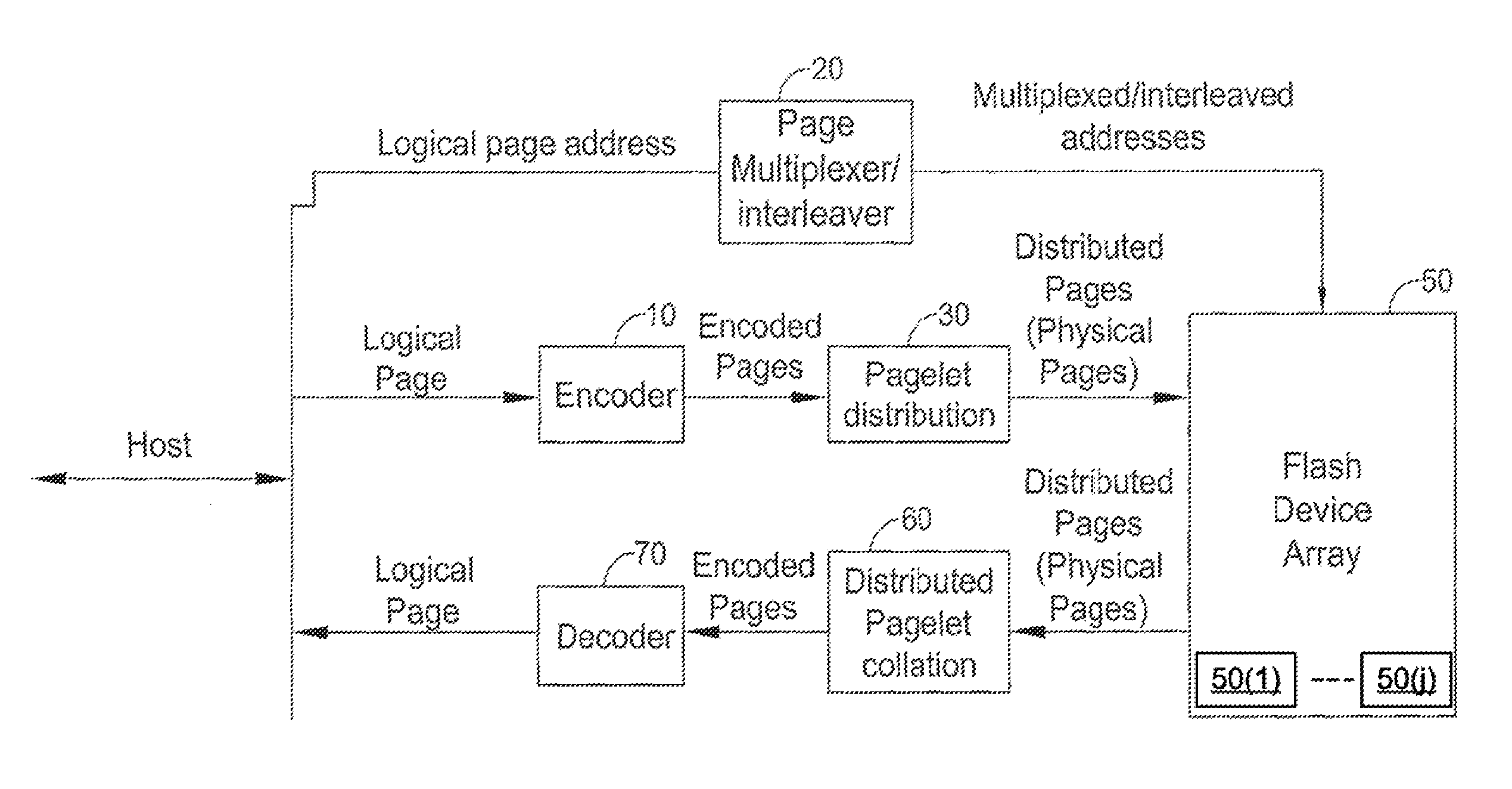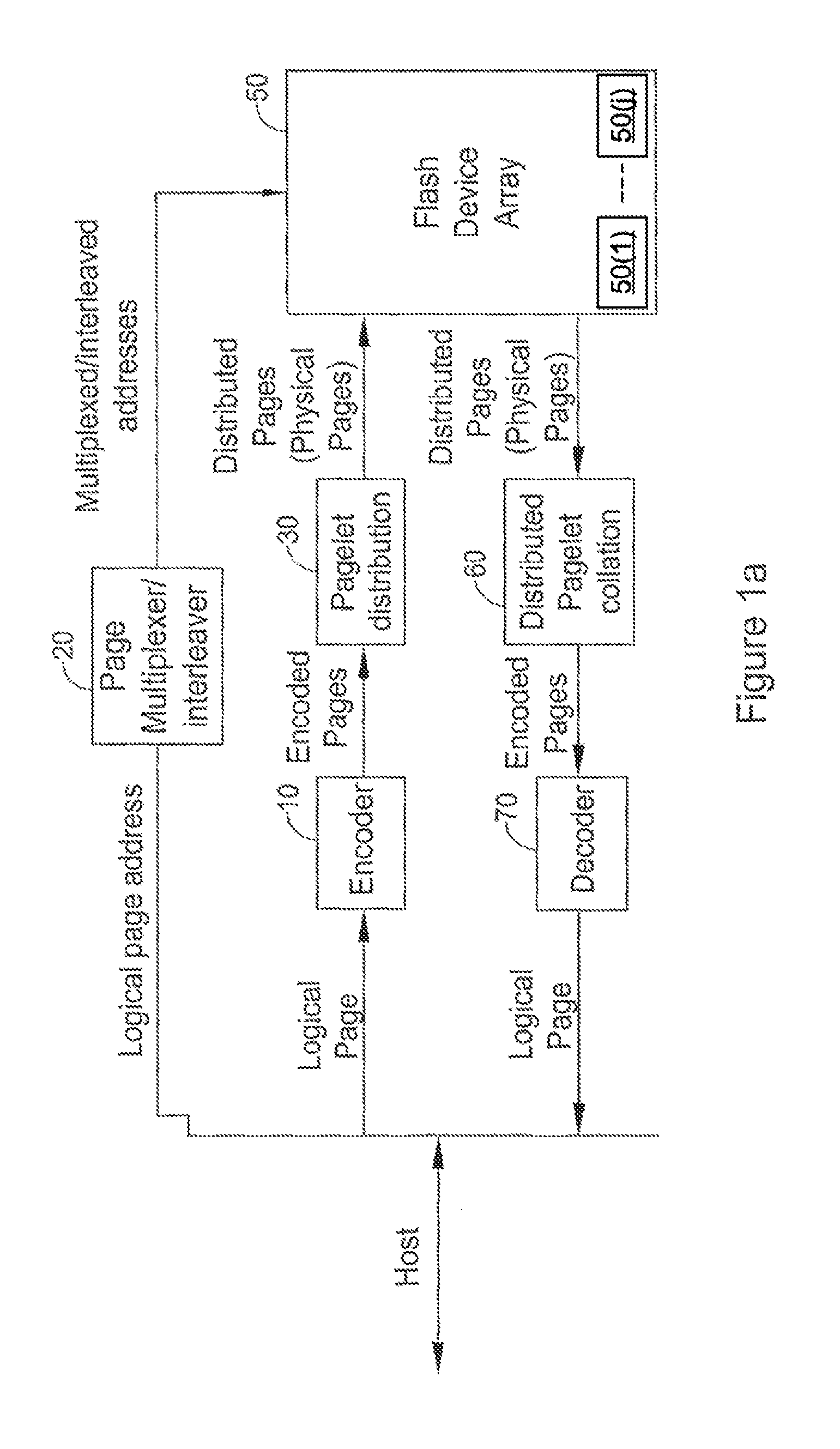Systems and methods for averaging error rates in non-volatile devices and storage systems
a non-volatile device and error rate technology, applied in memory systems, digital storage, instruments, etc., can solve the problems of storage interfaces that do not in themselves perform wear leveling, file metadata being constantly rewritten in-place, and space it uses is wear leveled
- Summary
- Abstract
- Description
- Claims
- Application Information
AI Technical Summary
Benefits of technology
Problems solved by technology
Method used
Image
Examples
Embodiment Construction
[0065]Today's Flash memory devices store information as charge in either a floating gate transistor or an NROM transistor. Multi-Level Cells (MLC) store several bits by setting the amount of charge in the cell. The amount of charge is then measured by a detector, e.g. by a threshold voltage of the cell's transistor gate. Due to inaccuracies during the multiple erase and programming procedures and because of charge loss due to time and temperature (also known as retention), the measured levels suffer from a random distortion. As a result, some errors appear when the device is read. This reliability is then measured by the error probability or by a bit error rate (BER).
[0066]Flash devices are organized into pages. Each page contains a section allocated for data (512 bytes-4Kbytes) and a small amount of bytes (16-32 bytes for every 512 data bytes) allocated for redundancy and back pointers. The redundancy bytes are used to store error correcting information, for correcting errors which...
PUM
 Login to View More
Login to View More Abstract
Description
Claims
Application Information
 Login to View More
Login to View More - R&D
- Intellectual Property
- Life Sciences
- Materials
- Tech Scout
- Unparalleled Data Quality
- Higher Quality Content
- 60% Fewer Hallucinations
Browse by: Latest US Patents, China's latest patents, Technical Efficacy Thesaurus, Application Domain, Technology Topic, Popular Technical Reports.
© 2025 PatSnap. All rights reserved.Legal|Privacy policy|Modern Slavery Act Transparency Statement|Sitemap|About US| Contact US: help@patsnap.com



